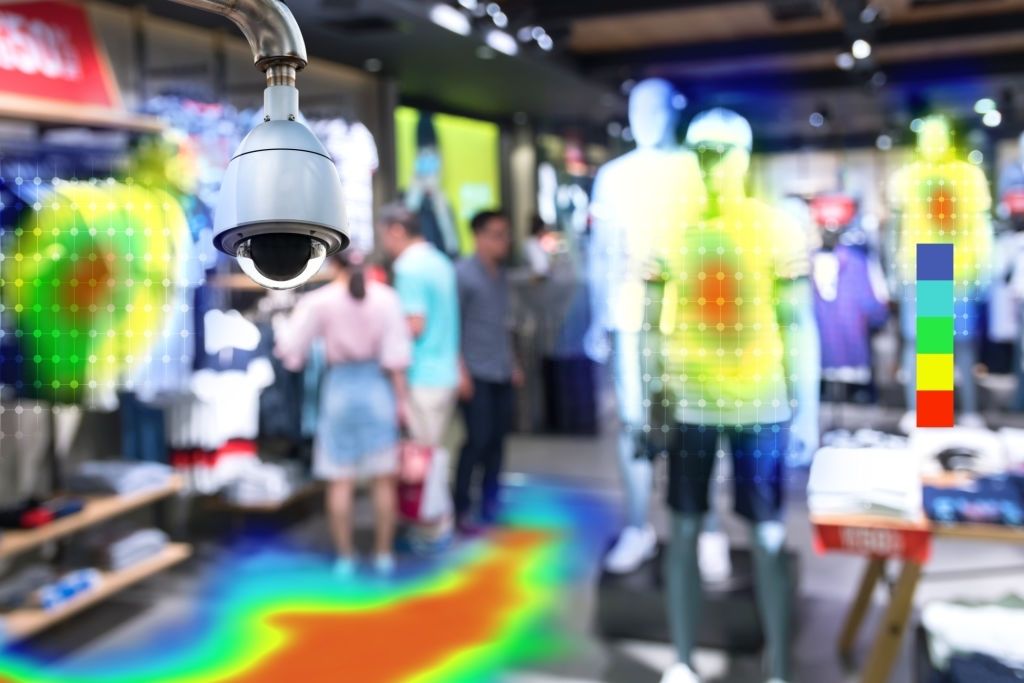What is a Heatmap & How To Use Heatmaps To Optimize Landing Pages?

Today, marketing experts are able to measure almost everything, giving them the opportunity to improve the performance of their online marketing campaigns.
Sometimes, however, we make the mistake of focusing on metrics that at first glance might seem useful, but they actually do not provide effective insights for evaluating performance, such as views and clicks.
A very high level of traffic can ascertain the quality of your headline, but it does not show you in detail the behavior of the users within your website or how they interact directly with the page.
Luckily, there are data visualization tools that can illustrate which section of your website generates the highest engagement rate and which does not get any engagement at all.
These tools are called heatmaps and they help you increase the Conversion Rate Optimization (CRO) of your website. They are able to provide you with the statistics and insights necessary to optimize the different parts of your website to increase your turnover.
What Is A Heatmap?

A heatmap is a visual representation of the engagement rate that a page on your website receives.
It uses a spectrum of colors to show you which part of your page attracts the attention of visitors the most. The “hottest” section is the one that attracts the most attention, while the “coldest” one attracts the least.
Different Types Of Heatmaps And What They Can Tell You

There are five main types of heatmaps: scroll maps, click maps, hover maps, form tester and session replay.
1. Scroll Maps
These are maps that show how much and how people scroll through a web page. They are interesting precisely because they show how low a user can scroll with the mouse.
You can use these heatmaps for any type of page, but they are particularly useful when you design very long landing pages and want to understand if the user will read them until the end (or at least to the point where you have placed your call to action).
Scroll maps can also help you optimize your design. The “hotter” the section, the more users have visited it. This type of information can be very helpful in determining the most appropriate page position for your call to action or the most important information.
The changing colors on your scroll map can also help you figure out which section is causing your visitors to lose attention.
2. Click Maps
These heatmaps show aggregate click data. Blue means fewer clicks, red means more and the white and yellow spots signify the sections that have a greater concentration of clicks.
These maps are very useful from a “communicative” point of view. They can tell us what to optimize and what works. For example: do you have a photo on the page that takes a lot of clicks, but is not linked to anything? Perhaps it would be appropriate to put a link to some useful resources.
3. Hover Maps
Hover maps show areas where users move the cursor when reading your page. The hotter the area, the longer the cursor stops over it.
This data can help you determine how visitors actually browse your site, so you can place the most important elements in the areas that get the most attention.
It also allows you to check if non-essentials are distracting your users from the most important ones.
4. Form tester
Form Tester helps analyze the behavior and interaction of the user on a form. Your landing page might be the best, but if there are issues with your form, the user will never convert.
The Form Tester helps analyze whether the form is readable, know where exactly users are leaving the form, and whether your form contains too many unnecessary fields that are preventing a conversion.
5. Session replay
Many services that generate heatmaps also allow users’ browsing sessions on your site to be recorded on video. For example, you can see how they fill out the forms on your pages, how quickly they read, how they scroll the page, etc.
It is very important to watch these videos to understand what bottlenecks and what problems the readers encounter, where they get stuck, where they give up and leave the page.
Remember that you are recording real user sessions, and therefore the information you collect is of enormous value.
The Benefits Of Using Heatmaps On Your Website

Heatmaps help you understand how people interact with the pages of your website, so you can find answers to critical business issues, such as:
- Why are my users not converting enough?
- How to ensure that more visitors act on my website?
Using heatmaps, you can determine whether people can:
- Go to important content or not see it at all
- Find and use the main links, buttons and CTAs on the page
- Get distracted by things they can’t click
- Have problems with a particular type of device.
Being a visual tool, heatmaps help you make informed, data-driven decisions for updating & redesigning your website and conducting A/B testing.
And they are also useful on a larger scale: in fact, heatmaps allow you to show the stakeholders, employees and colleagues what is happening on your website. It is difficult to dispute the objective data displayed by a heatmap.
What Kind Of Content Can You Use Heatmaps With?

Analyzing heatmaps of any type of page on your site would be ideal, but unfortunately, it would not be effective. The most effective way to enjoy this type of tool is to analyze pages that influence the rate of conversion of your site the most: the home page, landing pages and pages with a high number of conversions.
Home Page
The home page is your business card. By constantly monitoring the page scroll, you can gauge which section your users are focusing on the most, what information they linger on the most, and which call to action is most effective.
This way, you will know exactly where to place the most important elements of your homepage, thereby reducing your bounce rate and increasing the conversion rate.
Landing page
Your landing pages are the primary tool for converting visitors into leads. If you can analyze user behavior within these pages, you can define the optimal landing page design and generate the maximum number of leads for your business.
Pages With High Conversions
Putting heatmaps on pages with a high conversion rate will help you analyze the sections from where you’re getting maximum conversions.
It will also help you understand which call to action is working for you and what its position should be.
Once you’re able to gather these metrics, you can replicate the same strategy for other pages of your website.
Final Thoughts
Whether you are studying the most suitable position to place calls to actions on your blog posts or performing an A/B test of your website design, heatmaps are the best tool for measuring & understanding user behavior and designing content that creates engagement with your audience thereby generating leads and transforming them into customers.
If you want to start using heatmaps, register with services such as Crazy Egg, ClickTale, Hotjar or Yandex Metrica. Just integrate a simple script on the page, to start gathering the precious data!